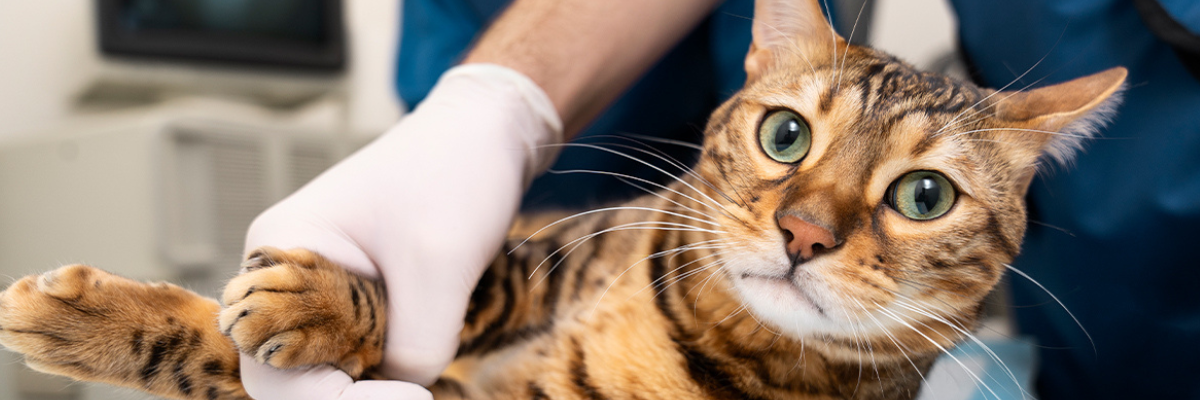Hypokalemia (low potassium levels) in cats
Hypokalemia means a low level of potassium in the blood and is relatively common in cats, especially older ones. It can be temporary, such as during vomiting or reduced appetite, and in these cases, it often resolves on its own. However, in many situations, treatment is needed to correct the potassium deficiency. If the cause is chronic, the cat may require long-term potassium supplementation, as hypokalemia may recur when the treatment is stopped.
Symptoms of hypokalemia in cats
Potassium is crucial for muscle function, and a low potassium level can cause muscle weakness. Here are common symptoms of hypokalemia:
- Muscle weakness: Often noticeable in the hind legs, with a wobbly walk or stiffness.
- Constipation: The cat may defecate less frequently, and the stool may be hard.
- Fatigue and loss of appetite: General weakness is a common sign.
- Increased thirst and urination: May occur in more severe cases of hypokalemia.
- Drooping head: In severe cases, the cat may be unable to hold its head up.
Mild cases of hypokalemia may have subtle symptoms that are only detected when the cat responds positively to treatment.
Causes of hypokalemia
-
Increased potassium loss through urine
- Common in chronic kidney disease, a degenerative condition affecting older cats.
- Bacterial urinary tract infections can also lead to temporary hypokalemia.
-
Reduced potassium absorption
- Chronic gastrointestinal diseases can reduce the body's ability to absorb potassium.
-
Medications
- Corticosteroids (e.g., prednisolone) and insulin are examples of medications that can cause potassium deficiency.
- Diuretics, such as furosemide, increase potassium loss through urine.
-
Diet-related causes
- Hypokalemia is rare if the cat eats a balanced diet. Raw food or homemade diets require careful planning to avoid potassium deficiency.
-
Other diseases
- Hyperthyroidism, hyperaldosteronism, poorly controlled diabetes, and urinary tract obstructions can all contribute to hypokalemia.
Treatment of hypokalemia in cats
Chemeyes-K is a common treatment and is administered in capsule form. It can:
- Be given whole by mouth.
- Be opened and mixed into the cat's food.
- Be dissolved in water and given with a syringe.
What happens if a healthy cat receives potassium supplements?
Healthy cats can regulate their potassium levels and excrete excess through urine. However, it's important not to give supplements regularly without veterinary approval, especially if the cat has other health issues.
Can too much potassium be harmful?
Yes, a high potassium level in the blood can be life-threatening. Therefore, potassium supplements should only be given according to the veterinarian's instructions and under regular monitoring.
Frequently asked questions about potassium supplements
1. How much Chemeyes-K should I give?
The dosage depends on the cat's potassium levels. The starting dose is usually 1–2 capsules, 1–2 times per day.
2. How do I switch from Kaminox to Chemeyes-K?
1 capsule of Chemeyes-K is equivalent to 2 ml of Kaminox. If you previously gave 2 ml morning and evening, give 1 capsule morning and evening.
3. Is a break in treatment dangerous?
A short break rarely affects the cat severely. However, symptoms may recur depending on the length of the break.
4. Can I give other medications at the same time?
Yes, Chemeyes-K can be combined with other medications.



